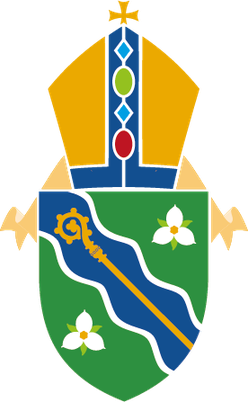Edward Rigby was an actor.
Edward Rigby may also refer to:
- Edward Rigby (priest), Archdeacon of Niagara from 1964 to 1973
- Edward Rigby (died 1706), MP for Preston
- Edward Rigby (physician) (1747–1821), English physician, writer, and local politician
- Edward Rigby (obstetrician) (1804–1860), English obstetrician and medical writer
Edward Rigby was a Canadian Anglican priest in the 20th Century.
An archdeacon is a senior clergy position in the Syriac Orthodox Church, Church of the East, Chaldean Catholic Church, Anglican Communion, St Thomas Christians, Eastern Orthodox churches and some other Christian denominations, above that of most clergy and below a bishop. In the High Middle Ages it was the most senior diocesan position below a bishop in the Catholic Church. An archdeacon is often responsible for administration within an archdeaconry, which is the principal subdivision of the diocese. The Oxford Dictionary of the Christian Church has defined an archdeacon as "A cleric having a defined administrative authority delegated to him by the bishop in the whole or part of the diocese." The office has often been described metaphorically as that of oculus episcopi, the "bishop's eye".

The Diocese of Niagara is one of thirty regional divisions in the Anglican Church of Canada. The see city of the diocese is Hamilton with the Bishop's seat being located at Christ's Church Cathedral on James Street North. Located within the ecclesiastical province of Ontario, it borders the Dioceses of Huron and Toronto. The area enclosed by the Diocese of Niagara includes much of the Golden Horseshoe, and moves north to include Erin and Orangeville as far as Shelburne. Moving sharply south the line includes Mount Forest and widens, south-westerly to include Elora and Guelph. Skirting Brantford and the Territory of the Six Nations Confederacy, the line then travels, again, south-westerly to Nanticoke and Lake Erie to include the entire Niagara Peninsula. Major urban centres within its borders are St. Catharines, Hamilton, Guelph, Oakville, Burlington, and Orangeville.
| This disambiguation page lists articles about people with the same name. If an internal link led you here, you may wish to change the link to point directly to the intended article. |







